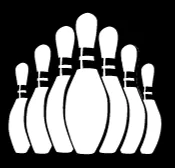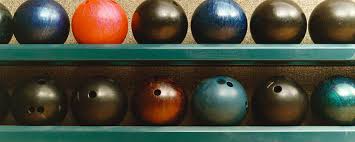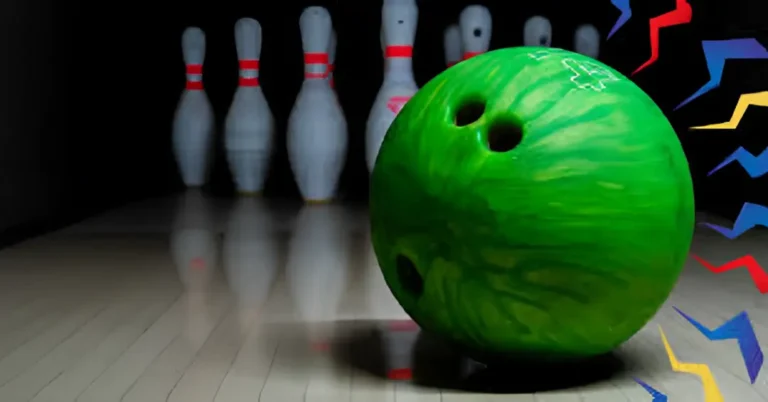Symmetrical vs. Asymmetrical Bowling Balls
Choosing a new bowling ball can confuse people today. Should you get one with an even inside or a lopsided inside? And how does that change how the ball moves anyway?
In this guide, we’ll break it down in simple terms. You’ll see how even and uneven weight blocks inside balls make them act differently. Understanding this can help pick the right ball for better aim. Let’s discuss symmetrical vs. asymmetrical bowling balls!
Bowling is a sport enjoyed by many, but choosing the right equipment can be tricky, especially when deciding between symmetrical and asymmetrical bowling balls. In this guide, we’ll explore the differences, advantages, and best uses of each type to help you make an informed decision.
Also, read these blogs
What Are Bowling Lanes Made of and Why?
What is a Symmetrical Bowling Ball?
The asymmetrical bowling ball has an even distribution of mass around its core. This design makes the ball predictable and easier to control, especially for beginners. The balanced core ensures a smooth and consistent roll, making it ideal for straight and controlled shots.
Advantages of Symmetrical Bowling Balls
- Predictability: The balanced core leads to a more predictable motion.
- Control: Easier to control, especially for those new to bowling.
- Consistency: Provides a consistent roll, helping bowlers improve their accuracy.
Best Uses for Symmetrical Bowling Balls
Symmetrical balls are perfect for:
- Beginners: Those new to the game benefit from their predictability.
- Spare Shots: Easier to control for hitting specific pins.
- Straight Bowlers: Ideal for bowlers who prefer a straight shot rather than a hook.
What is an Asymmetrical Bowling Ball?
An asymmetrical bowling ball has an uneven mass distribution around its core. This design causes the ball to have a more pronounced and variable hook potential. Advanced bowlers often prefer these balls for their ability to create more dynamic and powerful shots.
Advantages of Asymmetrical Bowling Balls
- Hook Potential: Greater hook potential for more dynamic shots.
- Versatility: Can be used in various lane conditions.
- Power: Generates more power and can create better pin action.
Best Uses for Asymmetrical Bowling Balls
Asymmetrical balls are suitable for:
- Advanced Bowlers: Those who have mastered control and want to enhance their game.
- Hook Shots: Ideal for bowlers who rely on hook shots for better pin action.
- Varied Lane Conditions: Adaptable to different oil patterns and lane conditions.
Key Differences Between Symmetrical and Asymmetrical Bowling Balls
Understanding the differences between these two types of balls can help you decide which one suits your style.
Core Design
- Symmetrical: Evenly balanced core.
- Asymmetrical: Unevenly balanced core, leading to varied motion.
Motion
- Symmetrical: Smooth and predictable.
- Asymmetrical: Dynamic and variable, with a greater hook potential.
Control
- Symmetrical: Easier to control, especially for beginners.
- Asymmetrical: Requires more skill to control but offers more powerful shots.
Choosing the Right Bowling Ball
When selecting between a symmetrical and asymmetrical bowling ball, consider the following factors:
Skill Level
- Beginners: Symmetrical balls are easier to handle and provide a consistent roll.
- Advanced Bowlers: Asymmetrical balls offer greater versatility and power.
Bowling Style
- Straight Bowlers: Symmetrical balls are ideal for those who prefer straight shots.
- Hook Bowlers: Asymmetrical balls are better for those who use hook shots to knock down pins.
Lane Conditions
- Dry Lanes: Symmetrical balls perform well on dry lanes where less hook is needed.
- Oily Lanes: Asymmetrical balls are suitable for oily lanes, providing the necessary hook and power.
Some Common FAQS
Conclusion
Choosing between a symmetrical and asymmetrical bowling ball depends on your skill level, bowling style, and the lane conditions you typically encounter. Symmetrical balls offer predictability and control, making them ideal for beginners and straight bowlers. Asymmetrical balls, with their dynamic hook potential, are perfect for advanced bowlers looking to enhance their game.
Investing in the right ball can significantly impact your performance. Whether you’re aiming for consistency or power, understanding the core differences will help you make the best choice for your bowling style.
By following these insights, you’ll be better equipped to select the right bowling ball and improve your game. Happy bowling!





